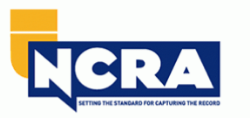Astound the Jury: Vital Elements of a Powerful Test Presentation
In the realm of lawful advocacy, the ability to mesmerize a jury is extremely important to the outcome of a test (trial presentation). Necessary aspects such as understanding the target market, crafting an engaging narrative, and grasping spoken and non-verbal communication are essential parts of a reliable discussion. Furthermore, the critical use aesthetic aids can considerably boost comprehension and retention of vital disagreements. As these elements intertwine, they create a cohesive approach that not only educates but additionally engages jurors on numerous degrees. What certain methods can absolutely transform a typical presentation right into a remarkable experience for the jury?

Understanding Your Audience
Comprehending your target market is a crucial facet of effective trial presentation. A successful presentation rests on the capability to comprehend the demographics, worths, and proneness of jurors. This comprehension informs how disagreements are framed, proof is provided, and sob stories are crafted, making sure that the message reverberates with the jurors on an individual degree.
Research study suggests that jurors originated from diverse backgrounds and might have varying degrees of recognizing pertaining to legal process (trial presentation). Thus, it is vital to stay clear of lawful jargon that could alienate or confuse them. Rather, using clear, relatable language fosters engagement and comprehension. Additionally, recognizing the jurors' possible predispositions and life experiences enables the trial speaker to prepare for arguments and address issues proactively.
Effective test discussion likewise entails observing jurors' reactions during the process. Engaging with jurors as individuals instead than a cumulative unit is necessary in fostering a strong link in the court room.

Crafting an Engaging Narrative
Crafting an engaging story is important in leading jurors through the intricacies of a situation. A well-structured narrative not only simplifies complex legal ideas but also involves jurors on an emotional degree, making the info extra relatable and unforgettable.
This message should resonate with the jurors' worths and experiences, fostering a connection that goes beyond plain truths. This sequential method can aid jurors comply with the development of occasions, emphasizing cause and result.
Integrating human components-- such as individual stories or anecdotes-- can additionally boost the story's impact. These components evoke empathy, allowing jurors to visualize the consequences of the situation on the real worlds. In addition, employing a constant motif throughout the discussion reinforces the main argument, making it much easier for jurors to preserve important points.
Ultimately, a compelling narrative transforms a test discussion from a plain address of truths right into an influential tale that astounds the court, urging them to deliberate with both reason click here for more and feeling.
Using Aesthetic Aids
Incorporating visual help right into a trial presentation can substantially improve jurors' comprehension and retention of information. Aesthetic products such as charts, diagrams, pictures, and video clips can change complicated legal concepts and proof into easily absorbable styles. By engaging multiple senses, these help enable jurors to visualize the instance's crucial elements, making it easier for them to adhere to along and realize detailed details.
Moreover, properly designed visual help can highlight crucial points and emphasize connections between various pieces of proof. As an example, timelines can properly illustrate the series of events, while annotated pictures can clarify particular information appropriate to the situation. This not just aids in understanding yet also enhances the story offered by the lawyer.
Excessively complicated or chaotic visuals might bewilder jurors and detract from the message. Eventually, reliable aesthetic interaction can be an effective tool in persuading jurors and assisting them get to informed conclusions.
Mastering Verbal Communication
Efficient spoken interaction is crucial in a test discussion, as it acts as the primary means through which attorneys convey their arguments and connect with jurors. Mastering this ability entails clarity, persuasion, and engagement. Lawyers must articulate their factors plainly and briefly, avoiding legal jargon that might perplex jurors. Simpleness in language cultivates understanding and assists jurors comprehend complicated problems offered during the test.
Moreover, tone and pacing considerably influence just how messages are gotten. A confident tone shares authority, while ideal pacing enables jurors to absorb information without really feeling overwhelmed. Attorneys must likewise vary their singing inflections to emphasize key factors and preserve jurors' interest throughout the discussion.
Furthermore, the company of spoken arguments is crucial. Structuring the narrative practically and coherently helps jurors follow the lawyer's line of thinking, making it much easier for them to retain essential info. Making use of convincing strategies, such as narration, can also improve the psychological resonance of the debates offered, consequently producing an extra profound link with jurors.
Ultimately, understanding verbal communication not just strengthens an attorney's instance however also promotes trust fund and rapport with the court, significantly boosting the opportunities of a positive verdict.

Engaging With Body Movement
Nonverbal communication plays an essential function in trial discussions, commonly review conveying messages that words alone can not share. Body language, incorporating gestures, stance, facial expressions, and eye call, substantially affects exactly how jurors perceive the reputation and sincerity of the speaker. A confident position, with shoulders back and an open posture, can impart trust, while closed-off body movement might suggest defensiveness or unpredictability.

Face expressions must mirror the emotions related to the instance, strengthening the narrative existing. A sincere expression during an emotional moment can evoke empathy and reinforce the psychological allure. Eventually, understanding body language is important for efficient test presentations, as it boosts verbal communication and establishes an engaging presence that reverberates with the court.
Conclusion
In final thought, captivating the jury demands a strategic method that encompasses comprehending the target market, crafting an engaging story, utilizing aesthetic help, mastering verbal communication, and engaging with body language. Each aspect plays a critical role in creating a powerful trial presentation that resonates with jurors on both emotional and intellectual levels (trial presentation). By integrating these elements successfully, lawful specialists can considerably enhance their capability to persuade and influence jury decision-making